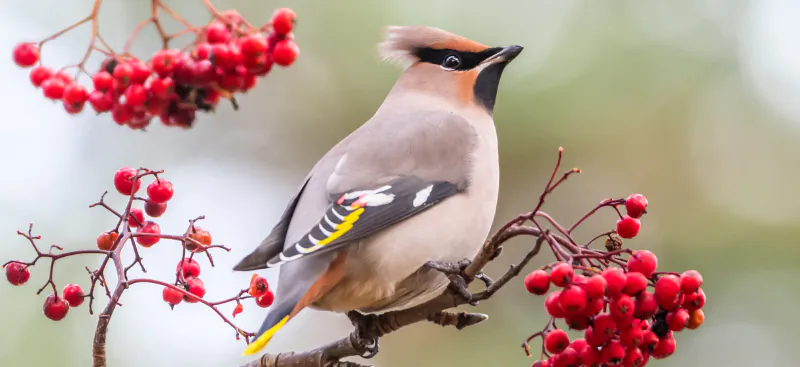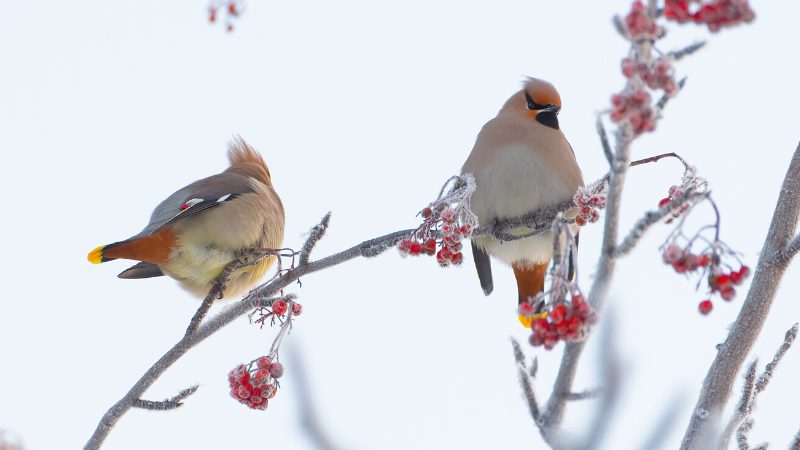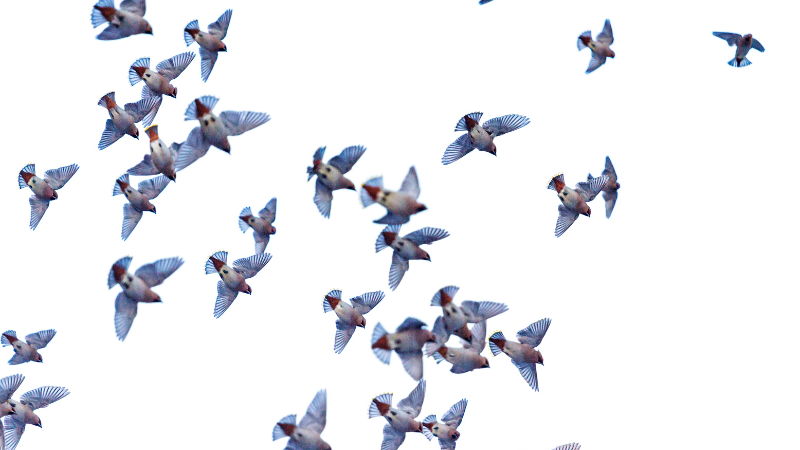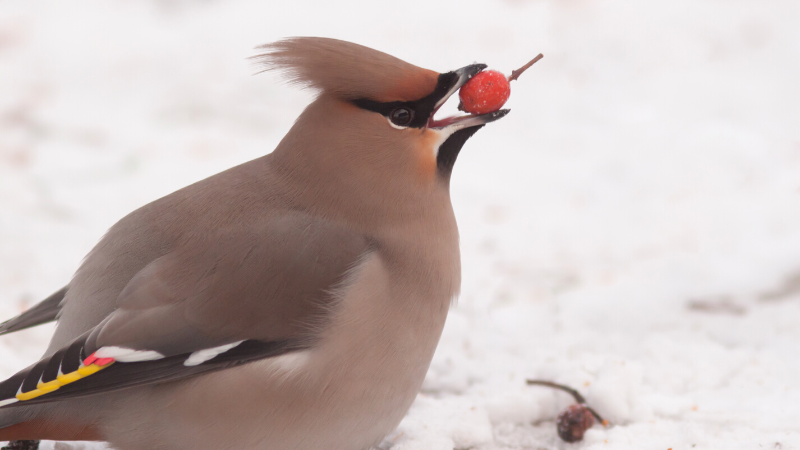Wonders of the Waxwings
Waxwings remind us of the punks of the bird world. Not because of their inappropriate behaviour or dressing room demands but because of their beautiful Mohawks, or crests as they are officially called.
What is a Waxwing bird?
Waxwings are small, chunky birds with short little legs and a grey body flecked with bright yellow, red, black and white.
Their feathery and pointy grey crest is used for attracting females, the more impressive the crest, the more likely they will find themselves a mate. The bird world can be pretty fickle when it comes to dating, and looks do count. Sadly, they do not breed in the UK.
It's all in a name
The Waxwing takes its name from the red tips on its wings and feathery cheeks (secondary feathers) - The red flecks are said to resemble dripping wax. Due to the heavy black markings on their face, they often look like they are frowning or are being seemingly aggressive.
Do Waxwings migrate?
Waxwing birds fly from Scandinavia to the UK intermittently from one winter to the next. If berries and food are generally in short supply in their home country, they'll fly south in search of a better food source.
Waxwings are typically drawn to northern and eastern parts of the UK. This is mainly due to the breeding grounds, but as they work their way through the berry crops, they will often fly south to hunt for more berries and form flocks where they find good food sources.
In a good year, the UK could expect anywhere in the region of 12,000 Waxwings! You can just imagine the beautiful site of thousands of red flecked Waxwings on the horizon.
They are not always guaranteed to the UK, so it is a pure joy when you are lucky enough to see one feasting in the hedgerow or on your travels through the countryside.
What do Waxwings eat?
Waxwings simply LOVE berries. They are not fussy when it comes to the type of berry, although, like any species, they have their favourite! Rowan Berries are their preference; the bright red berries are strong and bitter to taste and can be poisonous to humans, but to a Waxwing, they are gold dust.
They will also feast on, Rosehips, Hawthorn & Juniper. When you need to eat anything from 700 - 1000 berries a day just to survive, you soon learn not to be fussy. In the summer months, they will snack on fresh prey such as midges and other small insects.
However, do not confuse their love of berries with a love of fruit. Overripe fruit can actually be potentially dangerous for Waxwings; their little bodies cannot handle the fermentation.
Where to see Waxwings UK
Waxwings have recently been spotted in the Highlands, Cumbria and Norfolk. So, they're already making their way down the UK, and we may be fortunate enough to see them in the coming months.
Remember, they like feasting on berries which are typically hidden in hedgerows and usually eat in numbers. If you want to improve your chances of spotting one or fifty, a stroll through the local countryside will significantly improve your chances.
You can also follow @waxwingsUK on Twitter to keep up to date with where and when they have been spotted.
We are yet to see one on the farm, but we remain ever hopeful. Keep an eye on our Instagram feed to see if we have been fortunate enough to be Waxwinged this winter.




